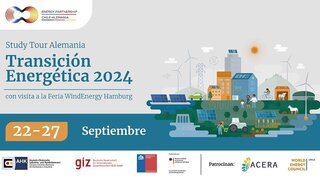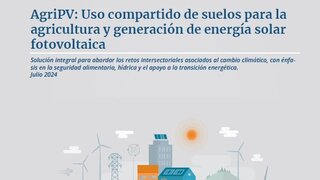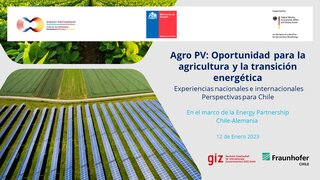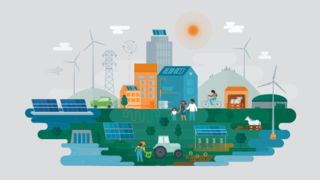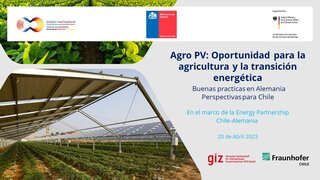AgriPV Side Event: OLADE Energy Week 2025
AgriPV: Solar energy and resilient agriculture for the energy and climate transition
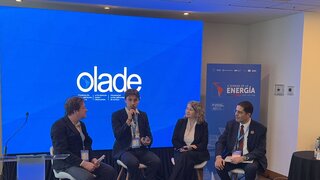
Within the framework of the OLADE 2025 Energy Week, the Energy Partnership Chile-Germany, together with the Ministry of Energy of Chile, organized the side event AgriPV: Solar energy and resilient agriculture for the energy and climate transition, held on October 2, 2025.
Session information
The Latin American and Caribbean region faces a double challenge:
-
Guaranteeing food security in a context of increasing droughts, heat waves, and extreme weather events.
-
Accelerating the energy transition through greater incorporation of renewable energies.
The pressure on land use and water availability requires finding innovative solutions that make it possible to reconcile agricultural production with clean energy generation.
Agrivoltaic systems (AgriPV), which combine agricultural production and solar energy generation on the same land, offer a response to these cross-sectoral challenges.
Recent research indicates that if only 1% of the world’s cultivable land were allocated to producing solar electricity, it would be possible to cover the entire global energy demand.
Globally, installed AgriPV capacity already exceeds 14 GW, with projects in China, France, Germany, and South Korea demonstrating its technical and socio-economic viability.
In the region, Chile stands out as a pioneer: studies estimate that in blueberry orchards alone there is a potential of 13.4 GWp, equivalent to 22% of national electricity generation in 2023.
Central question of the session:
How can AgriPV position itself as a key tool for water, food, and energy security in Latin America and the Caribbean, and what public policies are needed?
Agenda and participants
The event was moderated by Michael Schmidt (Energy Partnership Chile-Germany) and included the participation of authorities, specialists, and representatives of international organizations, who shared experiences and perspectives on the development of AgriPV technology and its potential in Latin America and the Caribbean. The session was structured in three blocks: opening remarks, technical presentations, and a discussion panel.
Opening remarks:
-
Julio Maturana – Head of the Sustainable Energy Division, Ministry of Energy of Chile
-
Fidel Carrasco – Coordinator of Energy Planning and Transition, Secretariat of Energy of Mexico
Presentations and discussion panel:
-
Camila Vásquez – Sustainable Energy Division, Ministry of Energy of Chile
-
Frederik Schönberger – Researcher at Fraunhofer Chile, leader of the Integrated Photovoltaics Research Line
-
Hugo Morales-Sosa – Regional Programmes Head for Latin America and the Caribbean, International Solar Alliance (ISA)
Launch of the guide
One of the highlights of the event was the presentation of the “Manual for the Development of Agrivoltaic Projects in Chile: Design models for 3 groups of crops in Chile”. This publication was prepared by Fraunhofer Chile and the Energy Center of the University of Chile, commissioned by the Energy Partnership Chile-Germany, in collaboration with the Ministry of Energy of Chile and the National Irrigation Commission (CNR).
The guide is a technical manual that provides guidelines, methodologies, and examples of application for the design of AgriPV projects in Chile. Its objective is to serve as a reference for professionals, researchers, and decision-makers interested in the integration of renewable energies in agriculture.
